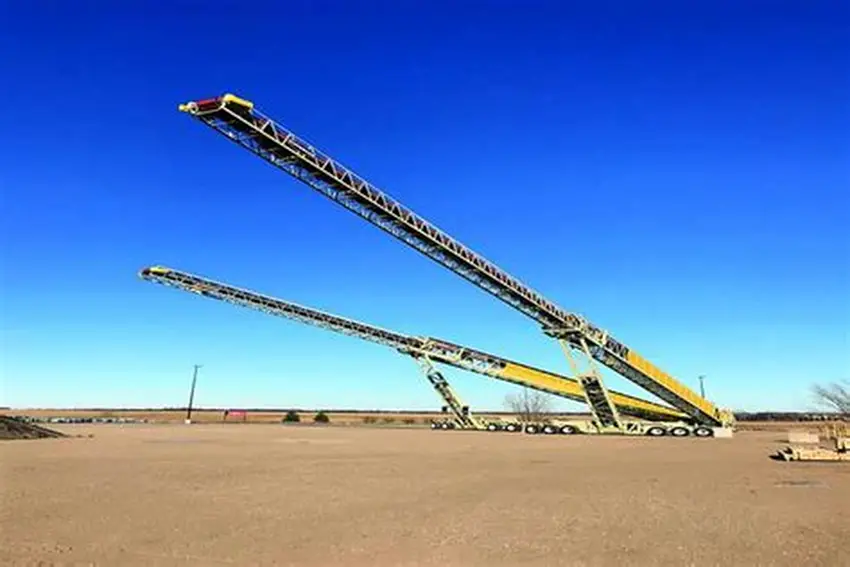Mobile Barge Conveyor Loading
Home > Products
Mobile Barge Conveyor Loading System
Mobile Barge Conveyor Loading System is a highly flexible, high-capacity bulk material handling solution designed to load materials such as coal, grain, ores, aggregates, fertilizers, cement, and more directly onto ships, barges, or other vessels. Unlike fixed port infrastructure, these systems are mobile—often mounted on tracks, wheels, or skids—making them ideal for ports, terminals, and remote loading sites. Their adjustability and mobility allow them to operate in both permanent and temporary port environments, providing a fast, efficient, and cost-effective alternative for maritime loading operations.
primary purpose of a mobile barge loader is to ensure efficient and rapid vessel loading while reducing dependence on permanent port infrastructure. They enable loading in remote or temporary locations, increase operational flexibility, improve loading speed, and minimize material spillage.

key components of such a system include the main conveyor, which transports material to the barge; a telescopic boom that extends the discharge point over the vessel’s hatch; radial or luffing mechanisms for vertical and horizontal positioning; and a chute or spout to minimize dust and spillage. A feed hopper receives material from trucks, loaders, or silos, while a track or wheel base ensures mobility across different terrains. Hydraulic or electric control systems manage movements, boom adjustments, and belt speed, often complemented by dust suppression systems such as water sprays or de-dusting nozzles.
Types of mobile barge loading conveyors vary depending on application needs. Tracked mobile loaders with crawler tracks are suited for rough terrain, such as mining ports. Wheeled conveyors are easy to reposition for smaller terminals. Telescopic radial conveyors offer extended reach and 180° swing for high-volume operations. Rail-mounted ship loaders move along portside rails for semi-permanent installations, while floating conveyor barges integrate the system into a vessel for offshore loading. Some systems are paired with stacker-reclaimers to directly load from storage yards.
Technical specifications include belt widths from 600 mm to 2000 mm, lengths ranging from 20 to over 60 meters, and capacities from 300 to more than 5000 TPH. Boom elevation ranges from –5° to +25°, with swivel angles up to 180°. Power can be supplied via diesel, electric, or hybrid sources, and mobility options include tracked, wheeled, and rail-mounted bases. Dust control is often achieved through enclosed belts and fog suppression systems.
These systems can handle a wide range of materials, including coal, iron ore, bauxite, grain, fertilizer, clinker, sand, cement, wood chips, and sulphur. They are commonly deployed in river ports, sea ports, floating docks, terminals with limited infrastructure, emergency loading situations, and trans-shipment operations.
Benefits of mobile barge conveyor loading systems include rapid deployment without the need for major civil works, high mobility between different docks or terminals, cost savings compared to fixed loaders, reduced downtime due to quick setup, and environmental compliance through low-dust and low-noise designs.
Optional features can enhance performance, such as telescopic or foldable booms, PLC-controlled automation, integrated belt weighers, CCTV and remote control, wind barrier curtains, and fire detection systems. For example, the MBL-1200-HD model features a 1200 mm belt width, maximum discharge height of 16 meters, 1800 TPH capacity, tracked remote-controlled travel, a 10-meter telescopic boom extension, and enclosed dust control with a fog cannon.

